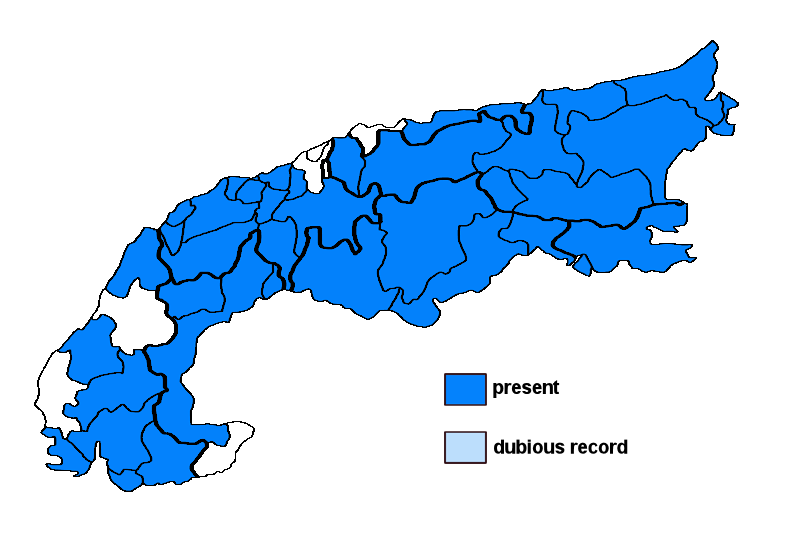Usnea subfloridana Stirt.
Syn.: Usnea comosa (L.) Vain. non Pers., Usnea comosa (L.) Vain. subsp. similis Motyka, Usnea similis (Motyka) Räsänen
Lichenised. Poorly known taxon.
Substrate: bark, lignum, siliceous rocks
Altitudinal range: from the submediterranean/colline belt (potential vegetation: mixed deciduous forests dominated by Quercus and Carpinus) to the alpine belt (potential vegetation: treeless Alpine grasslands and tundras, to the lower limit of perennial snow and the equilibrium line of glaciers)
Note: on branches of trees in relatively closed forests (but then in the upper parts of the crowns), and on isolated trees, one of the few species of Usnea which, albeit with stunted specimens, is also found at low altitudes and in relatively disturbed habitats. The results of a recent molecular study show that the separation between this species and U. florida cannot be maintained.
Austria: Vorarlberg; Tirol; Salzburg; Kärnten; Steiermark; Oberösterreich; Niederösterreich (incl. Wien); Burgenland; Germany: Oberbayern; Switzerland: Bern; Fribourg; Glarus; Graubünden; Luzern; Schwyz; Ticino; Uri; Unterwalden; Vaud; Valais; France: Alpes-de-Haute-Provence; Haute-Alpes; Alpes-Maritimes; Isère; Haute-Savoie; Vaucluse; Var; Italy: Friuli; Veneto; Trentino Alto Adige; Lombardia; Piemonte; Valle d'Aosta; Slovenia: Alpine and Pre-Alpine Slovenia; Trnovsky Gozd;





